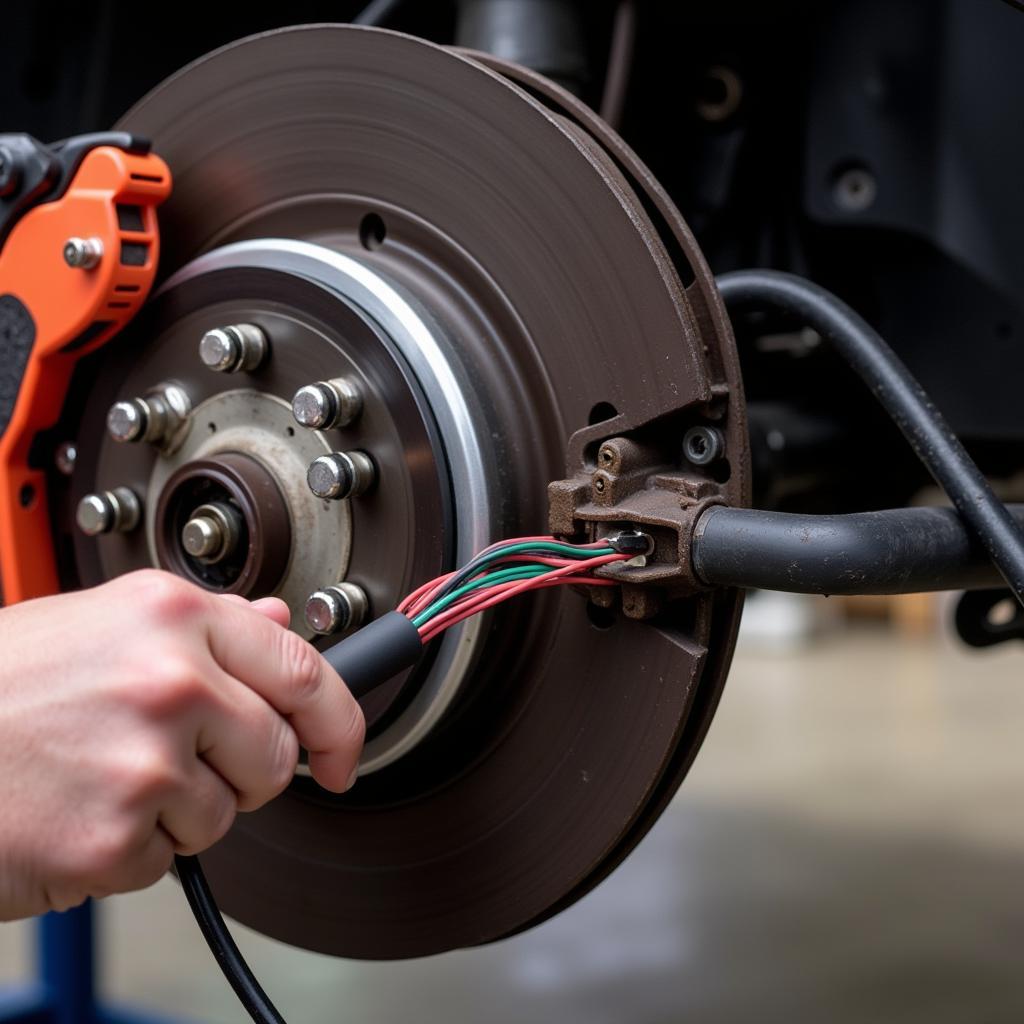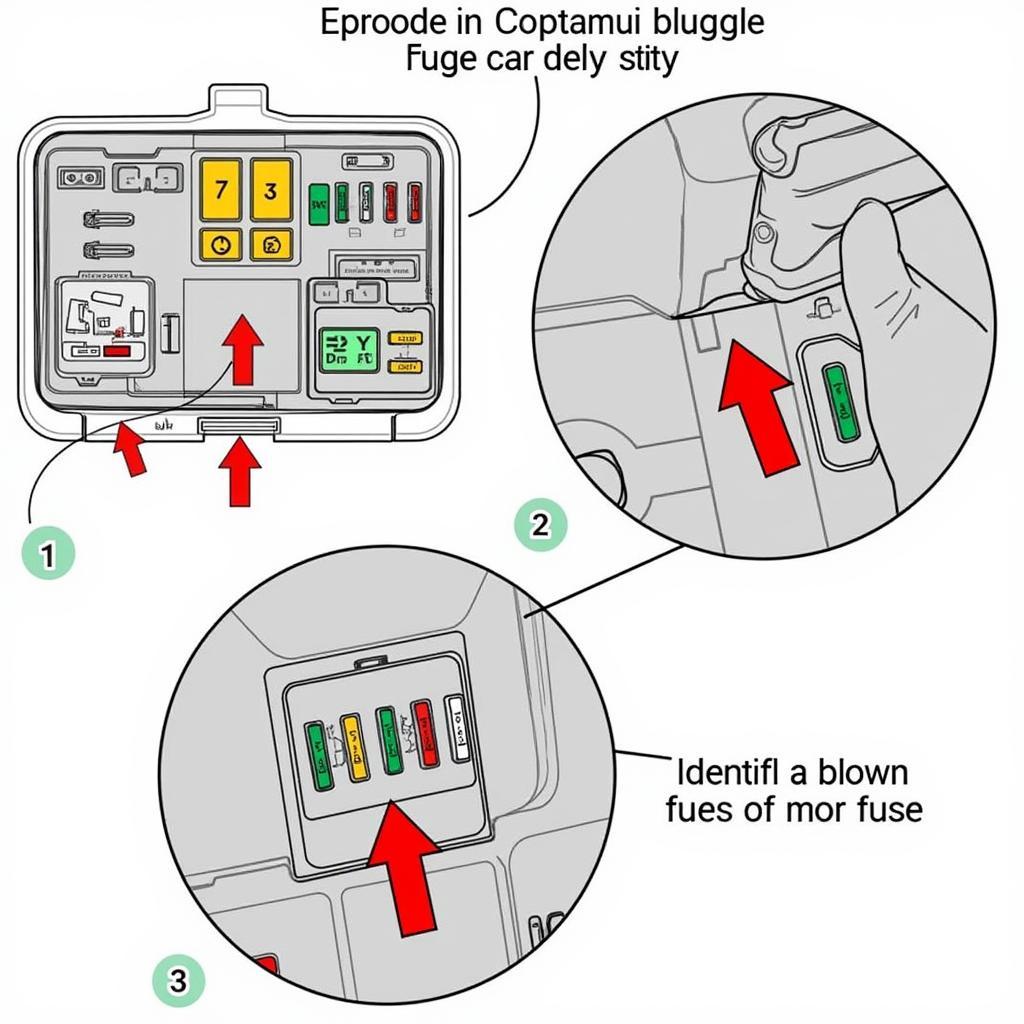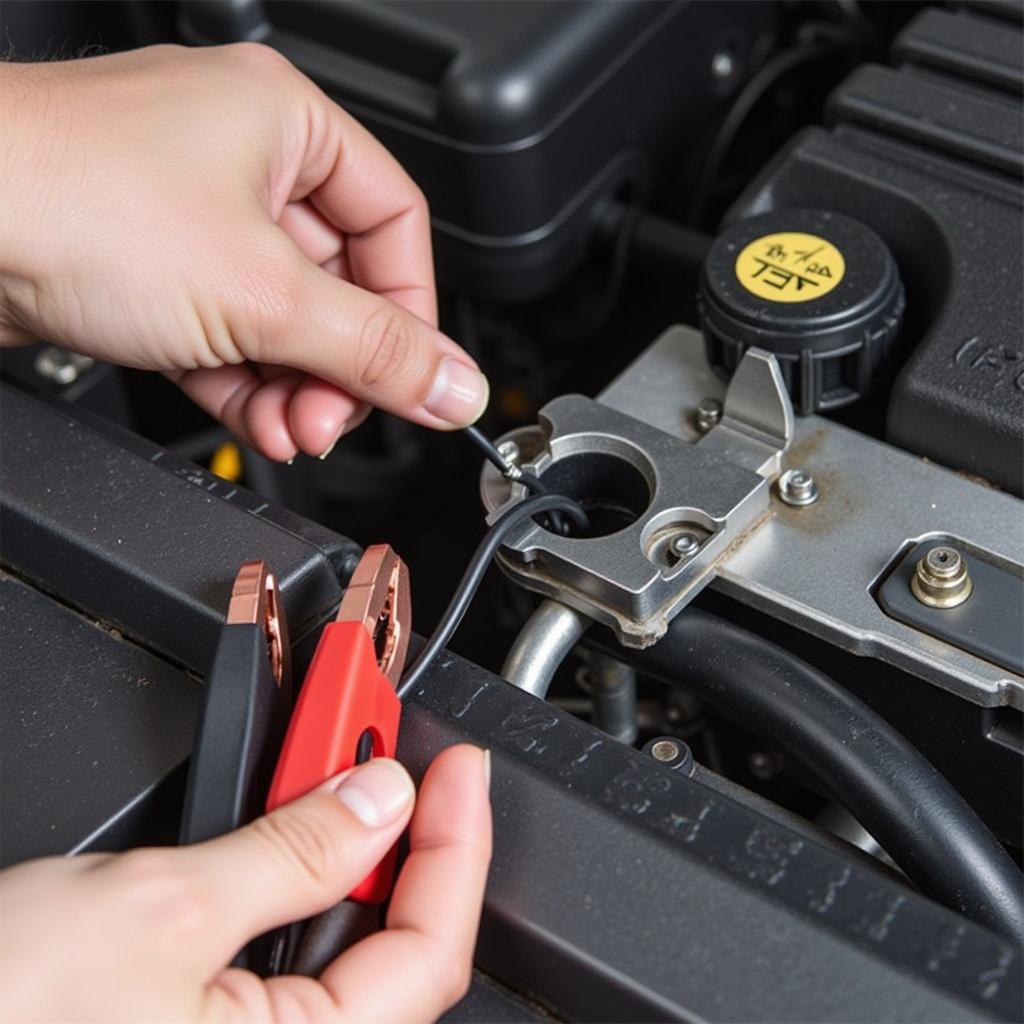The dreaded brake warning light. Few things can send a chill down a driver’s spine faster. If your brake warning light is on, and specifically points to an “brake warning light accessory circuit” issue, you need to understand the problem and what to do. This article will guide you through diagnosing and potentially fixing this frustrating issue.
One common reason for the “brake warning light accessory circuit” issue is a faulty brake light switch. This switch, located above the brake pedal, signals the brake lights to activate when the pedal is pressed. A malfunctioning switch can disrupt the entire accessory circuit, triggering the warning light. Another potential culprit could be a blown fuse. Fuses are the safety nets of your car’s electrical system. A blown fuse in the brake light circuit can cause the warning light to illuminate.
Understanding the Brake Warning Light Accessory Circuit
The brake warning light accessory circuit isn’t just about the lights on the back of your car. It’s a complex system involving the brake pedal switch, fuses, wiring, and the brake lights themselves. This circuit is essential for ensuring your vehicle’s safety and signaling your intentions to other drivers. A problem within this circuit can lead to various issues, from a simple malfunctioning brake light to more serious braking system problems.
Common Causes of a Brake Warning Light Accessory Circuit Malfunction
Several factors can contribute to a “brake warning light accessory circuit” malfunction. Let’s explore some of the most common culprits:
- Faulty Brake Light Switch: As mentioned earlier, the brake light switch is a prime suspect. Over time, these switches can wear out or become misaligned, causing erratic behavior.
- Blown Fuse: A blown fuse in the brake light circuit will interrupt the flow of electricity, preventing the brake lights from functioning correctly. This will often trigger the warning light.
- Wiring Problems: Damaged or corroded wiring can disrupt the signal between the brake pedal switch and the brake lights, leading to the warning light appearing on your dashboard.
- Low Brake Fluid: While not directly related to the accessory circuit, low brake fluid can sometimes trigger the brake warning light. It’s always a good idea to check your brake fluid level when the warning light is on.
“A simple check of your brake lights can save you a lot of trouble down the road,” says John Smith, Senior Automotive Electrical Engineer at AutoTech Solutions. “If your brake lights aren’t working, it’s a strong indicator of a problem within the accessory circuit.”
2001 camry brake light warning
Diagnosing the Problem
Diagnosing the issue requires a systematic approach. Start by checking the easiest and most common issues first:
- Check the Brake Lights: Have someone press the brake pedal while you observe the brake lights. If they are not functioning, this is your first clue.
- Inspect the Fuses: Locate the fuse box in your car (usually under the dashboard or in the engine compartment) and find the fuse corresponding to the brake lights. Check the fuse for any signs of damage or a broken filament.
- Test the Brake Light Switch: If the fuses are intact, the next step is to test the brake light switch. This can be done using a multimeter to check for continuity.
bmw 320d brake pad warning light reset
What if the problem persists?
If the basic checks don’t reveal the issue, it’s time to delve deeper. This might involve checking the wiring for damage or corrosion. This can be a more complex process, and you might need specialized tools or professional help.
 Mechanic Checking Brake Wiring Harness for Damage
Mechanic Checking Brake Wiring Harness for Damage
Fixing the Brake Warning Light Accessory Circuit
Depending on the diagnosis, the fix could be as simple as replacing a blown fuse or as complex as repairing damaged wiring. “Don’t underestimate the importance of proper wiring,” advises Emily Carter, Certified Automotive Technician. “A seemingly small wiring issue can cause a cascade of problems in your car’s electrical system.”
r 52 cooper reset brake pad warning light
In conclusion, addressing a “brake warning light accessory circuit” issue requires a thorough understanding of the system and a systematic approach to diagnosis. By following the steps outlined in this article, you can effectively troubleshoot the problem and ensure your vehicle’s safety. Don’t ignore the brake warning light; take action to resolve the issue promptly.



